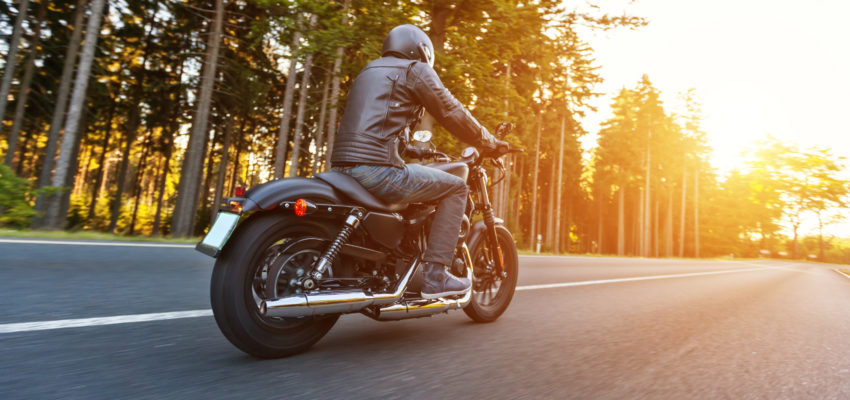What’s The Best Motorcycle Insurance?

The best motorcycle insurance comes with coverages that fit your specific needs. There’s no one-size-fits-all when it comes to a motorcycle policy. Here are common questions answered, and some things to consider when shopping for motorcycle insurance.
What does motorcycle insurance cover?
From bodily injury and property damage to theft and emergency expenses, motorcycle insurance can offer protection in many scenarios in the worst should happen. Some coverages include:
- Bodily injury to someone else or damage to someone else’s property for which you are legally responsible while riding your motorcycle
- Bodily injury to yourself because of an accident with an uninsured motorist
- Damage to your motorcycle caused by an accident
- Theft, fire, vandalism, and other losses — even while your motorcycle is in storage for the winter
- Emergency roadside expenses
- Damage to protective gear
- Trip interruption expenses
How much motorcycle coverage do you need?
Each state has different requirements, but typically, you would need liability, comprehensive and collision to be part of your motorcycle insurance coverage. Each state has its own minimum requirements for liability coverage. However, it is recommended that limits are equal to an individual’s net worth — this can safeguard your assets if you are liable in an accident. Liability coverage typically doesn’t pay for your medical bills or repairs to your bike after an accident. Instead, it may help pay for someone else’s medical bills, or damage to their property, if you’re at fault for an accident. There are typically two types of liability coverage:
- Bodily injury liability. If you’re at fault for an accident that injures another driver or pedestrian, bodily injury liability coverage may help pay for their medical bills. In some states, bodily injury liability coverage automatically helps protect passengers on your bike. Other states require you to pay an additional premium for the coverage to apply to your passenger.
- Property damage liability. If you cause an accident that damages another person’s property, this type of coverage may help pay to repair it.
Other coverages a motorcycle policy can provide:
- Motorcycle collision insurance covers damage to your motorcycle if you are involved in a collision with another vehicle. Your insurance company pays for damages (usually the book value of your bike before the loss occurred), minus your deductible.
- Comprehensive coverage pays for damages caused by an event other than a collision, such as fire, theft or vandalism. Like collision coverage, your insurance company will pay for damages, minus your deductible, and will cover only the book value of the motorcycle.
- Coverage for customized motorcycle parts. Many comprehensive and collision policies will only cover the factory standard parts on your motorcycle, or they will limit the coverage. If you decide to add on any optional accessories such as chrome parts, a custom paint job, trailers or sidecars, check with your insurer to understand the limits of coverage.
- Uninsured/underinsured motorist (UM/UIM) coverage pays for damages to you and/or your property caused by another driver who either doesn’t have insurance (uninsured) or doesn’t have adequate insurance (underinsured). UM/UIM policies typically pay for medical treatment, lost wages and, in some cases, property damage.
How much does a motorcycle insurance policy cost?
A few factors can affect the cost of your motorcycle policy:
- Your age, your driving record and where you live
- Type or style of bike you ride—for example, sport bike, cruiser or custom motorcycle
- Age of the motorcycle
- Number of miles you ride a year
- Where you store your bike
As with auto insurance, maintaining a good driving record with no violations will help keep your premium costs down. In addition, some insurers offer driver discounts and other ways to save money on your motorcycle policy. While offerings may vary by state and insurer, following is a sampling:
- Training course discounts are offered to graduates of classes such as the Motorcycle Safety Foundation (MSF) rider course. This is particularly useful for riders under the age of 25, usually considered a higher risk. It’s also a good idea for riders who have already had accidents.
- Multi-bike and multi-policy discounts can deliver savings to riders insuring more than one motorcycle. If available, getting your policy from your auto or home insurer may also qualify you for a multi-policy discount.
- Mature rider discounts can help experienced riders save money.
- “Lay-up” policy savings. Available primarily in northern U.S. states, with a lay-up policy all coverage except comprehensive is suspended during the winter months when the bike is not being used, saving the driver money.
How to get motorcycle coverage
We want you to enjoy your bike as safely and with as much protection as possible. Contact a local Bearingstar agent today to see what coverage may be available to you. Our goal is to be sure you have the best coverage for you and your loved ones, with a policy that meets your individual needs.
Call us at 877-801-7424 in Massachusetts, and 888-519-9996 in Connecticut.
Sources:
- Motorcycle Insurance Coverage Cost Guide. Time. https://time.com/nextadvisor/insurance/car/motorcycle-insurance-coverage-cost-guide/
- Motorcycle vs Car Insurance. Pocket Sense. https://pocketsense.com/motorcycle-vs-car-insurance-7834790.html
- Motorcycle Insurance vs Car Insurance. Finder. https://www.finder.com/motorcycle-insurance-vs-car-insurance
